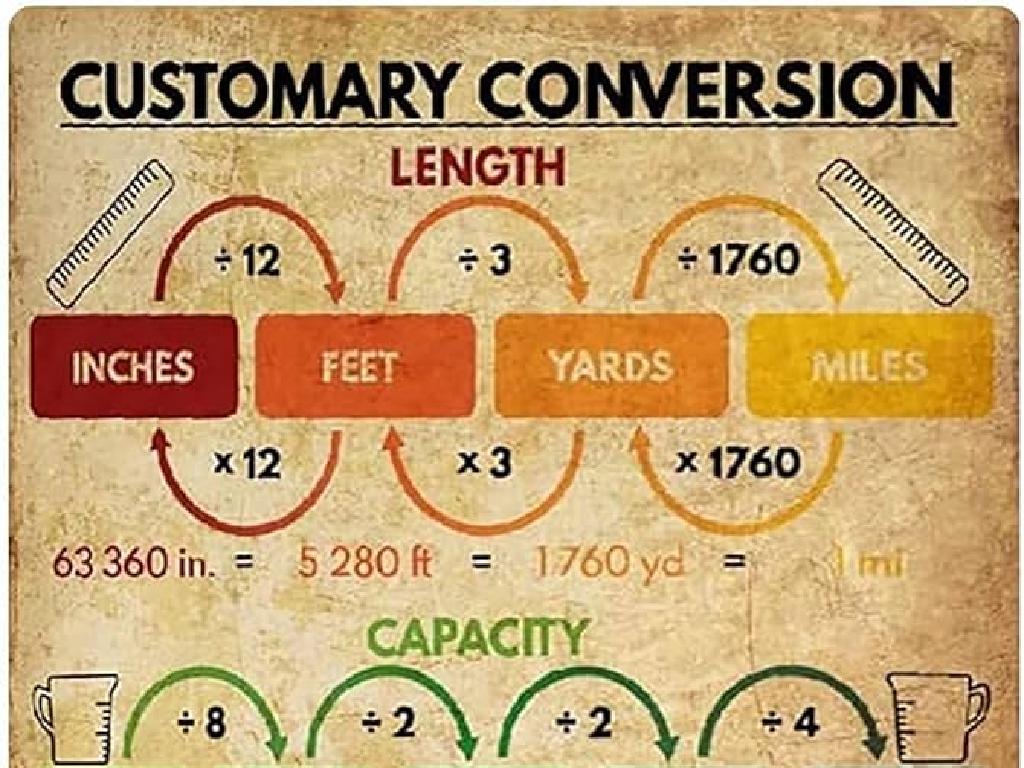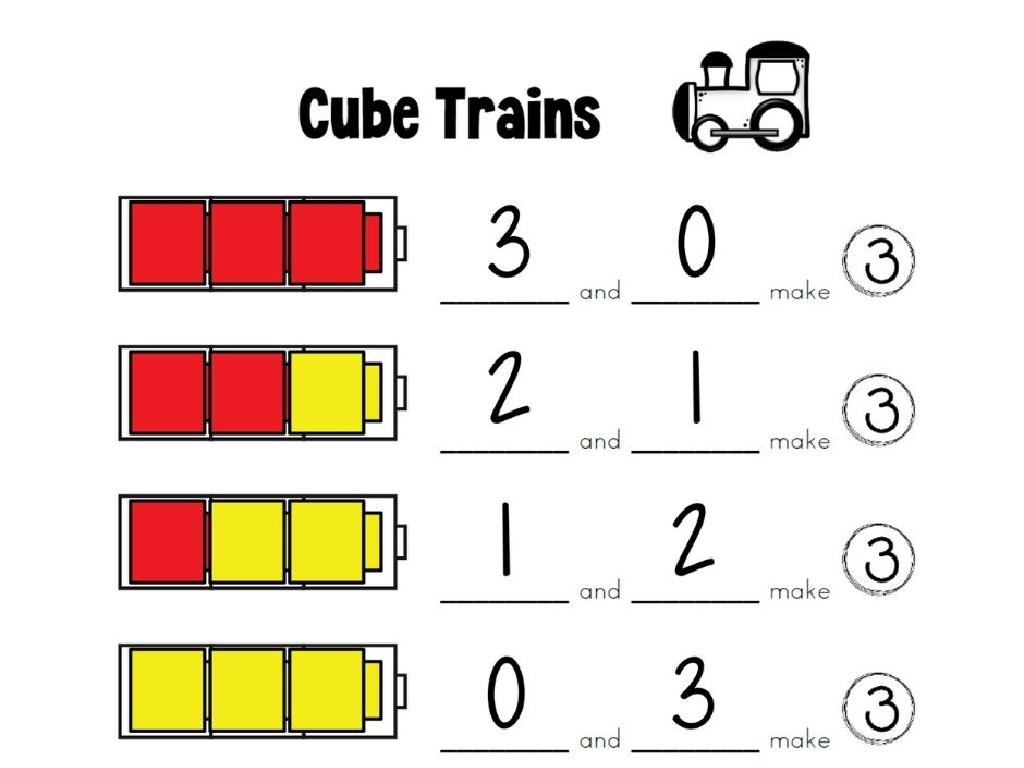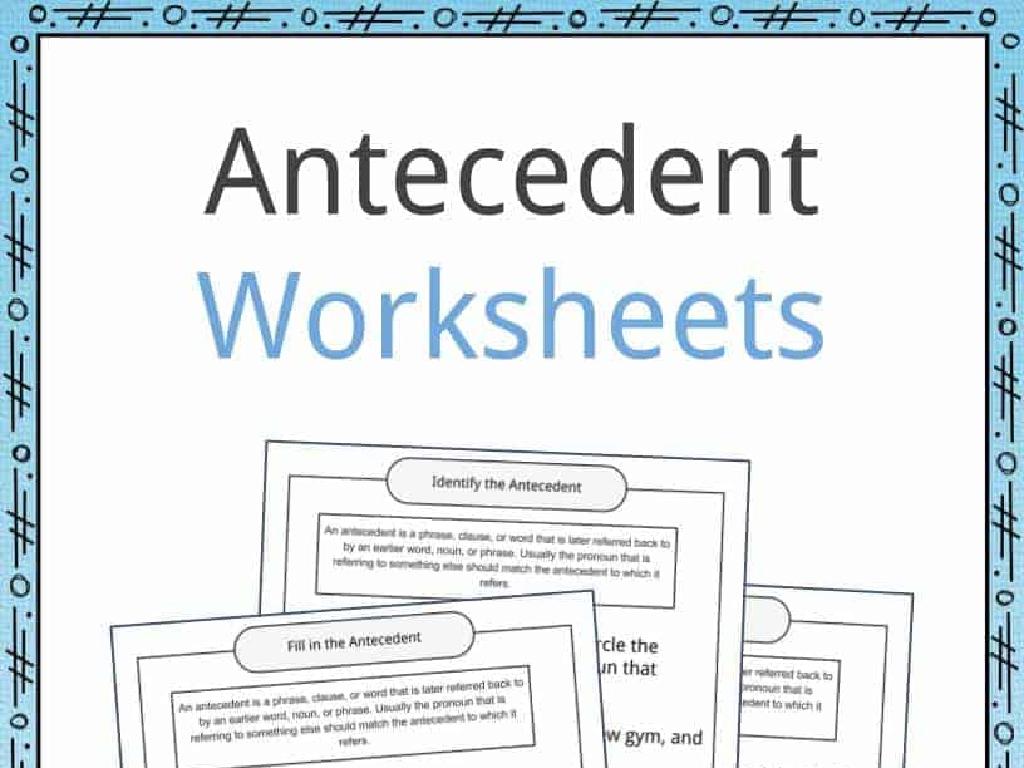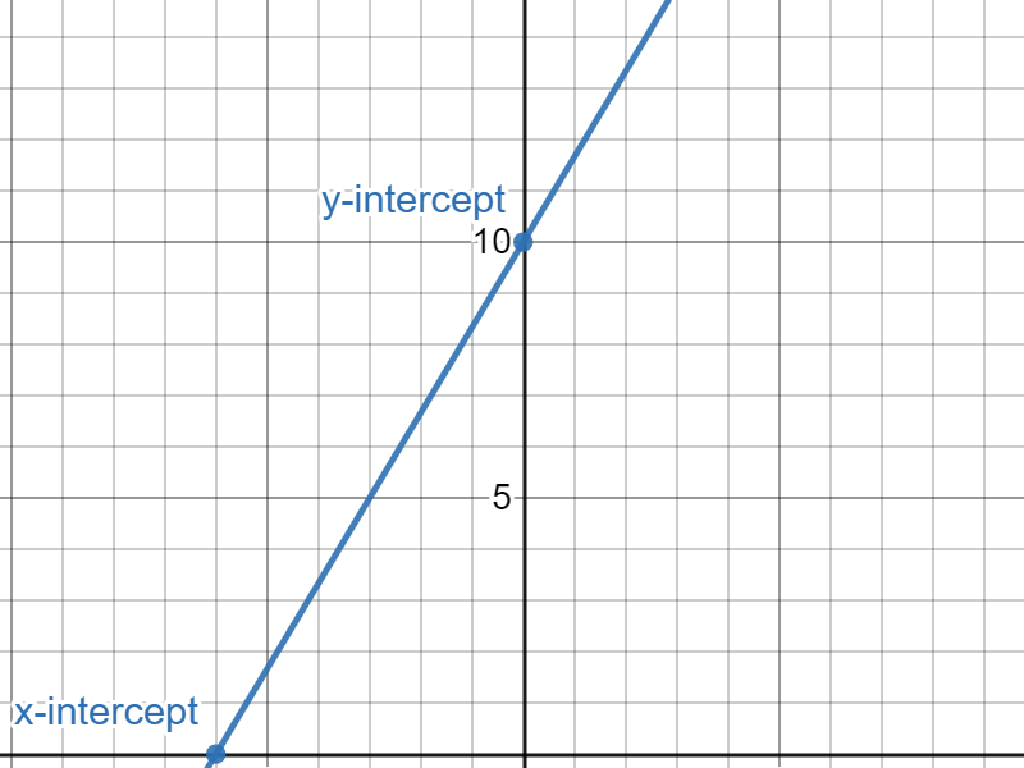Multiply By 3
Subject: Math
Grade: Third grade
Topic: Multiplication Skill Builders
Please LOG IN to download the presentation. Access is available to registered users only.
View More Content
Today’s Adventure: Multiplying by 3!
– Multiplication as fast addition
– Instead of adding 3+3+3, we can multiply 3×3!
– Multiplying numbers by 3
– 3×1=3, 3×2=6, 3×3=9, and so on
– Why learn multiplication?
– It helps solve problems quickly and efficiently
– Practice problems
– Try 3×4, 3×5, 3×6 to test your skills
|
This slide introduces students to the concept of multiplication as a form of repeated addition, specifically focusing on multiplying by 3. Begin by explaining that multiplication is a shortcut for adding the same number multiple times. Show how multiplying by 3 is like adding the number 3 over and over again. Emphasize the importance of multiplication in making math calculations faster and more efficient. Provide practice problems for the students to apply what they’ve learned, such as 3×4, 3×5, and 3×6, and encourage them to work through these problems both in class and as homework to reinforce their understanding.
Understanding Multiplication: Groups of Numbers
– What is multiplication?
– Multiplication as repeated addition
– Think of it as adding the same number over and over
– Example: 3 groups of 2 apples
– Imagine you have 2 apples, 3 times. How many apples do you have in total?
– 3 groups of 2 equals 6
– 2 apples + 2 apples + 2 apples = 6 apples
|
This slide introduces the concept of multiplication to third-grade students by relating it to the idea of having groups of the same number. Start by explaining multiplication as a way to add the same number multiple times. Use the example of apples to make it more concrete and relatable. Show that if you have 3 groups of 2 apples, it’s just like adding 2 apples together three times. This visual and practical approach helps students grasp the concept of multiplication as repeated addition. Encourage the students to draw pictures or use physical objects like counters to represent the groups of apples and to help them visualize the process of multiplication.
The Magic Number 3: Patterns and Counting
– Discover patterns with number 3
– Every third number is a multiple of 3. Let’s find a pattern!
– Counting in threes up to 15
– Start from 3 and add 3 each time: 3, 6, 9, 12, 15
– Use fingers for counting by threes
– Assign each finger a number and count: 1 finger for 3, 2 fingers for 6, and so on
– Practice makes perfect
|
This slide introduces students to the concept of multiplication by 3 through pattern recognition and counting. Begin by explaining that multiplying by 3 is like adding the same number three times. Show them how to identify patterns in multiples of 3 and use these patterns to predict the next numbers in the sequence. Encourage them to use their fingers as a physical tool to help them count in threes, which can be a fun and interactive way to learn. Provide plenty of practice opportunities with different sets of numbers to solidify their understanding. Remember to praise their efforts and progress to build confidence.
Let’s Practice Multiplication by 3!
– Interactive example: 1 x 3
– One group of 3 is 3
– Interactive example: 2 x 3
– Two groups of 3 make 6
– Interactive example: 3 x 3
– Three groups of 3 total 9
– Group activity with objects
– Use items like blocks to show 3 groups
|
This slide is designed to be interactive and engaging for third-grade students learning to multiply by 3. Start with simple examples on the board and have students participate by solving them. For the group activity, provide objects such as blocks or counters and have students physically group them into sets of three to visualize the concept of multiplication. Encourage students to discuss how using a multiplication table can make finding answers quicker and easier. This will help them understand the practical use of multiplication in everyday life. The teacher should circulate during the activity to ensure understanding and correct any misconceptions. Prepare to facilitate a class discussion afterward, highlighting the patterns observed in the multiplication table when multiplying by 3.
Multiplication Games: Mastering Multiples of 3
– Engage with fun multiplication games
– Play Multiplication Bingo with 3s
– Find and cover products of 3 on your Bingo card
– Match numbers with products of 3
– Pair each number with its multiple of 3
– Reinforce multiplication skills
|
This slide introduces interactive games designed to help third graders reinforce their multiplication by 3 skills. Multiplication Bingo encourages students to quickly calculate products of 3 and find them on their Bingo cards, promoting both speed and accuracy. The Matching Game is another fun activity where students pair numbers with their corresponding products of 3, enhancing their recall ability. These games serve as an enjoyable way to practice multiplication, ensuring students are engaged and more likely to retain the information. For the teacher: Prepare Bingo cards with products of 3 and call out multiplication facts. For the Matching Game, create cards with numbers on one set and products on another; students will match them. Rotate games to cater to different learning styles and keep the class lively.
Real-Life Application: Multiply by 3
– Multiplication in daily life
– How we use multiplication by 3 in various situations.
– Example: 3 packs of stickers
– If one pack costs $2, 3 packs cost 3 x $2 = $6.
– Discuss your experiences
– Understanding practical use
– It helps us quickly find totals in situations like shopping.
|
This slide aims to show students how multiplication by 3 appears in everyday life, reinforcing the concept with a tangible example. Start by discussing the concept of multiplication as a faster way of adding the same number several times. Use the example of buying stickers to illustrate this point: if one pack costs $2, then 3 packs would cost 3 times as much. Encourage students to think of and discuss times when they have encountered or could use multiplication by 3 in their lives, such as buying multiple items of the same price or sharing equally among friends. This will help them see the value of multiplication in real-world scenarios and understand why it’s a useful skill to learn.
Class Activity: Multiplication Art
– Create multiplication artwork
– Use arrays for 3×3, 4×3, 5×3, etc.
– Arrays show multiplication as rows and columns
– Share and explain your art
– Understand multiplication visually
– Visualizing helps grasp the concept of multiplication
|
This activity is designed to help students understand multiplication through a creative and visual approach. By creating artwork based on arrays, students can see the concept of ‘groups of’ in a tangible way. For example, they can draw 3 rows of 3 apples to represent 3×3. Encourage students to be creative with their arrays, using different items or drawings to represent the numbers. After creating their artwork, students will share with the class, explaining how their art represents the given multiplication problems. This will reinforce their understanding and allow them to practice their multiplication skills. Possible variations of the activity could include using stickers, stamps, or collage materials to create the arrays.
Review and Practice: Multiply by 3
– Recap: Multiplying by 3
– We reviewed how to multiply numbers by 3.
– Worksheet: Practice Problems
– Complete the worksheet with various problems.
– Look Ahead: Multiply by 4
– Tomorrow we’ll learn how to multiply by 4.
– Homework: Practice Sheet
– Solve additional problems to master multiplying by 3.
|
This slide is aimed at reinforcing the day’s lesson on multiplying by 3. Begin with a quick review of the key points from today’s lesson, ensuring students understand the concept of multiplication as repeated addition. Distribute a worksheet with a variety of problems for individual practice, providing immediate feedback to solidify their understanding. Introduce the concept of multiplying by 4 to pique their interest for the next lesson. Assign a practice sheet as homework to further strengthen their skills in multiplying by 3, preparing them for the progression to more complex multiplication.
Homework and Goodbye!
– Take home your practice sheet
– Multiply numbers by 3
– Examples: 3×1=3, 3×2=6, 3×3=9
– Practice makes perfect
– Doing homework helps remember what we learn
– Excited for more multiplication?
|
As we wrap up today’s lesson on multiplying by 3, hand out the practice sheets for students to take home. Remind them that practicing at home is crucial for mastering multiplication. Encourage them to try each problem and check their work. For the next class, prepare to dive deeper into multiplication with more challenging problems and fun activities. Let them know that you’re looking forward to seeing their progress and remind them to bring any questions they have to the next class.






